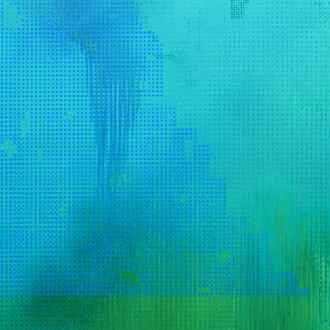Solange Pessoa (b. 1961, Ferros, Brazil, lives and works in Belo Horizonte) is an artist renowned for her poetic works that intersect and contemplate nature, the human body, and the forces that shape existence. Her practice often delves into the realms of the organic and the metaphysical, with a focus on the materiality of life. Pessoa’s work is influenced by her surroundings, particularly the natural environment of her native Minas Gerais, Brazil, in which the mining of iron ore, gemstones, gold, and other minerals, is a prevalent force. As such, Pessoa’s work is rooted in the telluric relationship with the landscape and the body, revealing hidden aspects of the earth. Through dreamlike installations, sculptures, drawings, ceramics, and paintings, Pessoa entwines the geological with the unconscious of the human species to unearth the connection between matter and memory.
Pessoa’s exhibition Catch the sun with your hand brings together four bodies of work across soapstone, ceramics, crystals, and organic matter. Many of her installations, including those in this exhibition, require years to complete, and even then, they are not fixed, remaining subject to change and evolving like cells that replicate, aggregate, and expand their biological nature. Pessoa’s Bags installation, seen here on the Museum’s lower level, was first created in 1994 and is continually updated. The iteration of Bags Aspen version (2023–25) has been reworked in response to the terrain of the Roaring Fork Valley and the American West. Towering walls of burlap sacks are filled with soil, plant matter, bones, seeds, and poems to create a living, universal, multisensory archive. Visitors are encouraged to sift through the abundant materials adding and spilling into the sculpture, sensing the living lands of Minas Gerais and Aspen.
Nearby, an expanse of quartz crystals and silver beckons and shines. Mined from the lands the artist calls home, the twenty tons of minerals constantly shift with light and challenge the viewer’s perception. Pessoa is attuned to the irreversible violence of extraction and complicates that history by embedding it within a resplendent tableau. This powerful substance envelops the viewer, instigating considerations of our physical relationship to our natural surroundings.
On the Museum rooftop, Pessoa’s carved soapstone sculptures (pedra-sabão) demonstrate the pliability of materials as metaphoric resources. For Pessoa, soapstone is an intimate yet foreign medium that was once ubiquitous within eighteenth-century colonial architecture, including fountains and statues. Here, Pessoa returns soapstone to a more primordial state, shaping these forms with her own hands, leaving them to weather under the sun and mark time’s passage.












